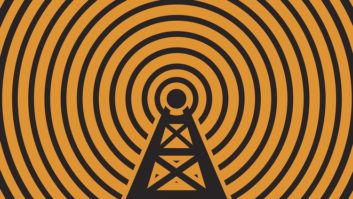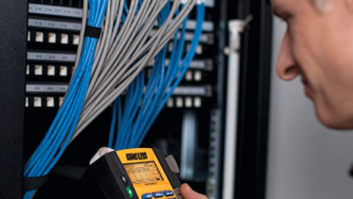A Better Backup Method
Oct 1, 2013 8:08 AM, By Doug Irwin, CPBE DRB AMD
In the September 2013 Tech Tips I discussed subtle single points of failure and how they should be found and eliminated from on-air systems to provide the best long-term reliability. This month I want to spend a little more time looking at air chains, and specifically, backup air chains.
I’ve seen several stations’ air-chains put together such that if you wanted to use any backup component, you were forced to use all the backup components. In other words, the backup system was a single thread, isolated from the main: the backup STL (whether radio or wireline) fed the backup on-air processor (and stereo generator for FM), which fed the backup exciter/transmitter, which in turn fed the backup antenna. They were all hard-wired together with no way of switching them by remote control.
Back in the day when there were more live jocks, and reaching an engineer (after hours) meant paging him or her, it made a lot of sense for the on-air personnel, after noticing a problem over the air, to just hit one button to turn on the backup transmitter. There’s no need for that person to analyze what the problem is, right? “Suddenly we had dead air and I just put the backup transmitter on.” Problem solved (hopefully). I, however, have issues with this methodology. Almost every time there is something inherently inferior about the backup system: the transmitter is old, the audio processor is ancient, the antenna is low on the tower, etc. If the station experiences a failure in its main air-chain audio processor (as an example) why would I want to settle for even lower performance just for the sake of simplicity? I wouldn’t. There is a better way.
Figure 1 shows what I usually refer to as the matrix solution to the main/backup air chain systems. With this arrangement, you can select any one of the four (potential) links from the studio via the first input switcher, which is passive and based on magnetic-latching relays. The output of that switcher feeds one of two on-air processors. Now each transmitter has its own input switcher (also passive and based on magnetic-latching relays) so that it can take an audio source from either audio processor. This allows us to make use of any one of the four (potential) audio sources for either transmitter, and allows us to use either audio processor for either transmitter. And yes — one chain is on a UPS, and one isn’t.

Figure 1. A matrixed approach to managing STLs and processors to feed a main and aux transmitter. Click to enlarge.
However, we still make use of the one-pushbutton idea, even with the matrix arrangement because the normal connections for the backup thread all make use of the backup components. Notice the backup thread is made up of the secondary STL (a 15kHz phone line) and the second audio processor, which feeds the DX10, our backup transmitter. So, in the spur of the moment, no analysis would be needed; You could just put the backup on in case of dead air. Later we can go back and switch over, by remote control, to the better elements (the better STL for example) to keep the system optimized until such time as the bad element of the thread is fixed.
Tech Tip Follow-up
In the June 2013 Tech Tips installment I wrote about dealing with coaxial cables and running them out to telephone poles and the like. I commented on the advantages of a creosoted-treated wooden pole. Dave Day from Epping, NH, wrote and told me the EPA warns that contact with creosote should be strictly limited, gloves should be used, and wood with creosote should not be burned. Please keep that in mind if you come in contact with poles that are treated this way.
Irwin is RF engineer/project manager for Clear Channel Los Angeles. Contact him at [email protected].
We Need Your Tips
Tech tips may be suitable to earn SBE recertification credits. Send your tips to [email protected].












